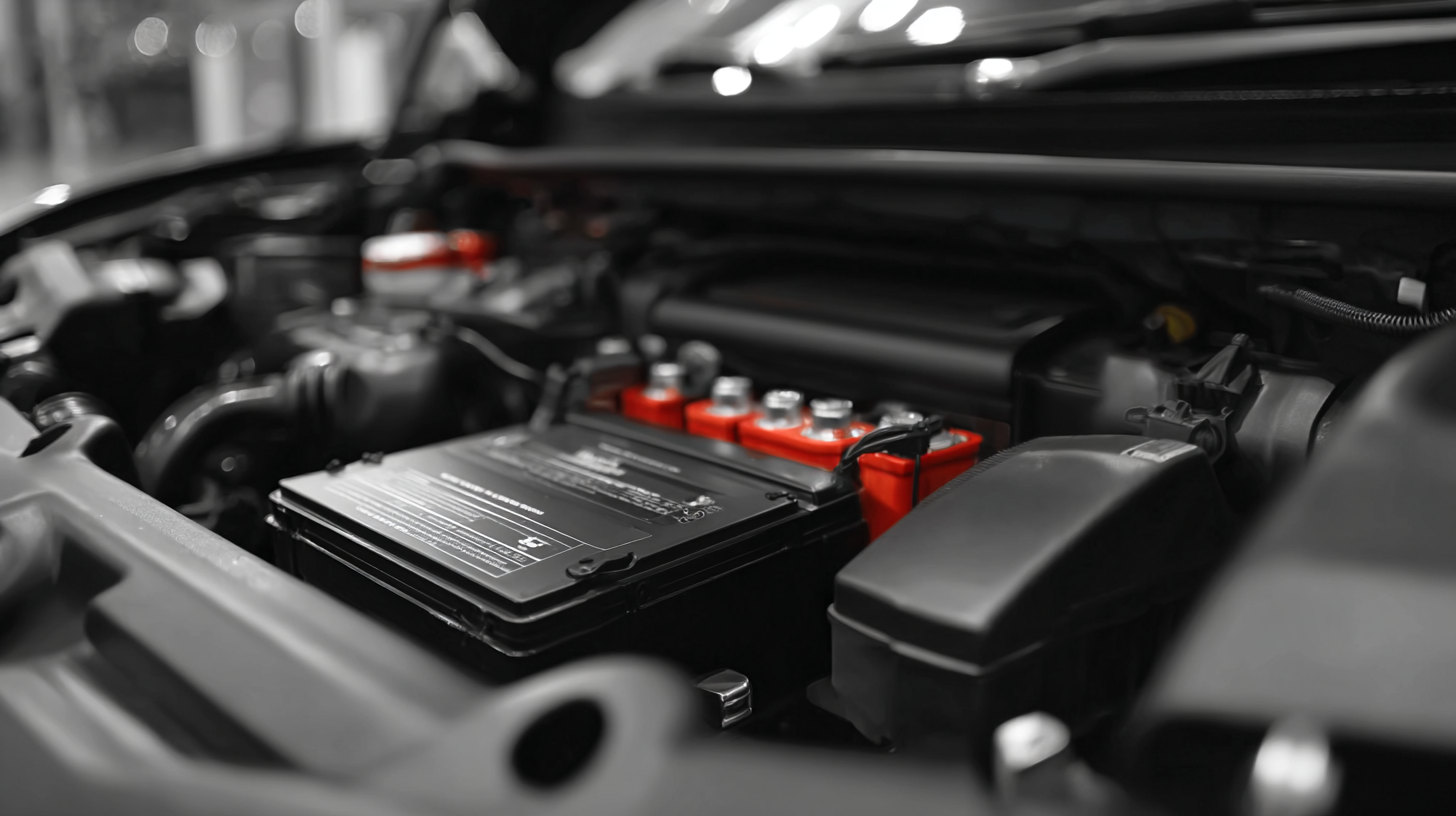Understanding the lifespan and maintenance of auto batteries is crucial for vehicle owners aiming to maximize performance and reliability. According to industry reports, a typical auto battery lasts between three to five years, influenced by factors such as climate, driving habits, and maintenance practices. The Battery Council International highlights that improper maintenance can significantly reduce battery life, with one study indicating that regularly checking connections and maintaining proper charge levels can extend a battery's lifespan by as much as 30%. As technology evolves, modern auto batteries are becoming more efficient; for instance, absorbed glass mat (AGM) batteries offer enhanced durability and longer service life compared to traditional lead-acid batteries.

This guide aims to provide comprehensive insights into the factors affecting auto battery lifespan and share essential maintenance tips to help vehicle owners ensure their batteries perform optimally.
Understanding the lifespan of auto batteries is crucial for maintaining vehicular performance and safety. Various factors influence battery longevity, including temperature extremes. For instance, hot weather can accelerate chemical reactions within the battery, leading to reduced capacity and a higher likelihood of failure.
Conversely, cold temperatures can hinder chemical processes, impairing the battery's ability to deliver adequate power. Maintaining optimal operating conditions can help mitigate these effects and extend the lifespan of the battery.
Another key element impacting battery health is the accuracy of State of Charge (SoC) and State of Health (SoH) estimations. These metrics provide essential insights into the battery's performance and longevity. Overcharging, particularly to 100%, can cause significant degradation over time. It’s crucial for vehicle owners to adopt best practices, such as avoiding extreme charge levels and keeping the battery clean and well-maintained. Implementing these strategies forms the foundation of effective battery management, ensuring reliable performance throughout its service life.
A weak battery can significantly affect your vehicle's performance, making it essential to recognize the signs that indicate it’s time for a replacement. One of the primary indicators is a slow engine crank. If you notice that your engine takes longer to start than usual, it may suggest that the battery is losing power.
 Similarly, dimming headlights or interior lights, particularly when idling or during start-up, can be a clear signal that your battery is struggling.
Similarly, dimming headlights or interior lights, particularly when idling or during start-up, can be a clear signal that your battery is struggling.
Another critical sign to look out for is corrosion around the battery terminals. This white, ashy substance can hinder the connection between the battery and the vehicle’s electrical system, leading to inefficient power supply. Additionally, if your vehicle’s dashboard indicator shows a battery warning light, it’s a red flag that shouldn’t be ignored. Regularly paying attention to these signs can help ensure your vehicle runs smoothly and can prevent you from being stranded due to battery failure.
Maintaining the lifespan of your auto battery is crucial for ensuring your vehicle runs smoothly. One of the essential maintenance tips is to regularly check the battery terminals for corrosion. Corrosion can inhibit the flow of electricity and diminish battery performance. To clean the terminals, disconnect the cables, and use a mixture of baking soda and water to eliminate corrosion. This simple step can help extend the battery's lifespan significantly.
Another important tip is to ensure that your battery is securely mounted. Vibrations from the road can cause internal damage to the battery over time. Make sure that the battery is fastened tightly in its designated space. Additionally, keep an eye on the battery's water level if you have a traditional lead-acid battery; maintaining the appropriate level will prevent damage caused by overheating.
Lastly, consider test-driving your vehicle regularly, especially during extreme weather conditions. Both excessive cold and heat can drastically affect battery performance. Frequent use keeps the battery charged and less prone to degradation. Regular charging and careful monitoring of your battery's condition can help you avoid unnecessary replacements and ensure reliable vehicle operation.
| Maintenance Tip | Description | Frequency | Impact on Lifespan |
|---|---|---|---|
| Regular Inspections | Check for corrosion, loose connections, and physical damage. | Monthly | High |
| Clean Battery Terminals | Remove dirt and corrosion to maintain good electrical contact. | Every 3 months | Medium |
| Check Water Level | Ensure electrolyte levels are sufficient in non-sealed batteries. | Monthly | High |
| Avoid Short Trips | Frequent short drives can prevent the battery from fully charging. | As needed | High |
| Test Battery Condition | Use a voltmeter or take to a professional for load testing. | Every 6 months | High |
| Keep Battery Charged | Use a battery maintainer if the vehicle is unused for long periods. | As needed | High |
Weather conditions have a significant impact on the lifespan and performance of auto batteries. Extreme temperatures can lead to accelerated battery wear, affecting both its capacity and overall durability. In hot climates, batteries may experience overheating, which can lead to reduced efficiency and a shorter lifespan. Conversely, in cold weather, batteries may struggle to provide the necessary power, making it harder to start the vehicle and causing potential performance issues. Therefore, understanding these environmental influences is crucial for maintaining optimal battery health.

Tips for maintaining your auto battery in varying weather conditions include regularly checking the battery’s connections and terminals for corrosion, which can be exacerbated by moisture and high temperatures. Additionally, it's advisable to park your vehicle in shaded areas during hot days and in garages during winter to shield the battery from extreme temperatures. Finally, consider investing in battery insulation or heaters if you live in particularly cold regions; this can help maintain optimum operating temperatures, prolonging the lifespan of your battery significantly.
When it comes to auto batteries, myths abound and can often cloud the understanding of their lifespan and maintenance. One prevalent misconception is that all batteries perform equally, ignoring the differences between traditional lead-acid and newer lithium technologies. In reality, the lifespan of an auto battery can vary significantly based on the type, usage patterns, and environmental conditions, with maintenance playing a critical role in extending longevity. Regular checks, such as ensuring connections are clean and monitoring electrolyte levels, are essential for maintaining battery health.
Additionally, misinformation can lead to negligence in proper care. For instance, many believe that a battery can be left unattended indefinitely without issues, when in fact, prolonged inactivity can lead to sulfation and decreased performance. Similarly, some drivers think that extreme temperatures have little effect on battery life, which is untrue. Exposure to severe heat or cold can drastically shorten battery lifespan. Recognizing these myths is crucial for any driver looking to maximize their battery's performance and reliability.